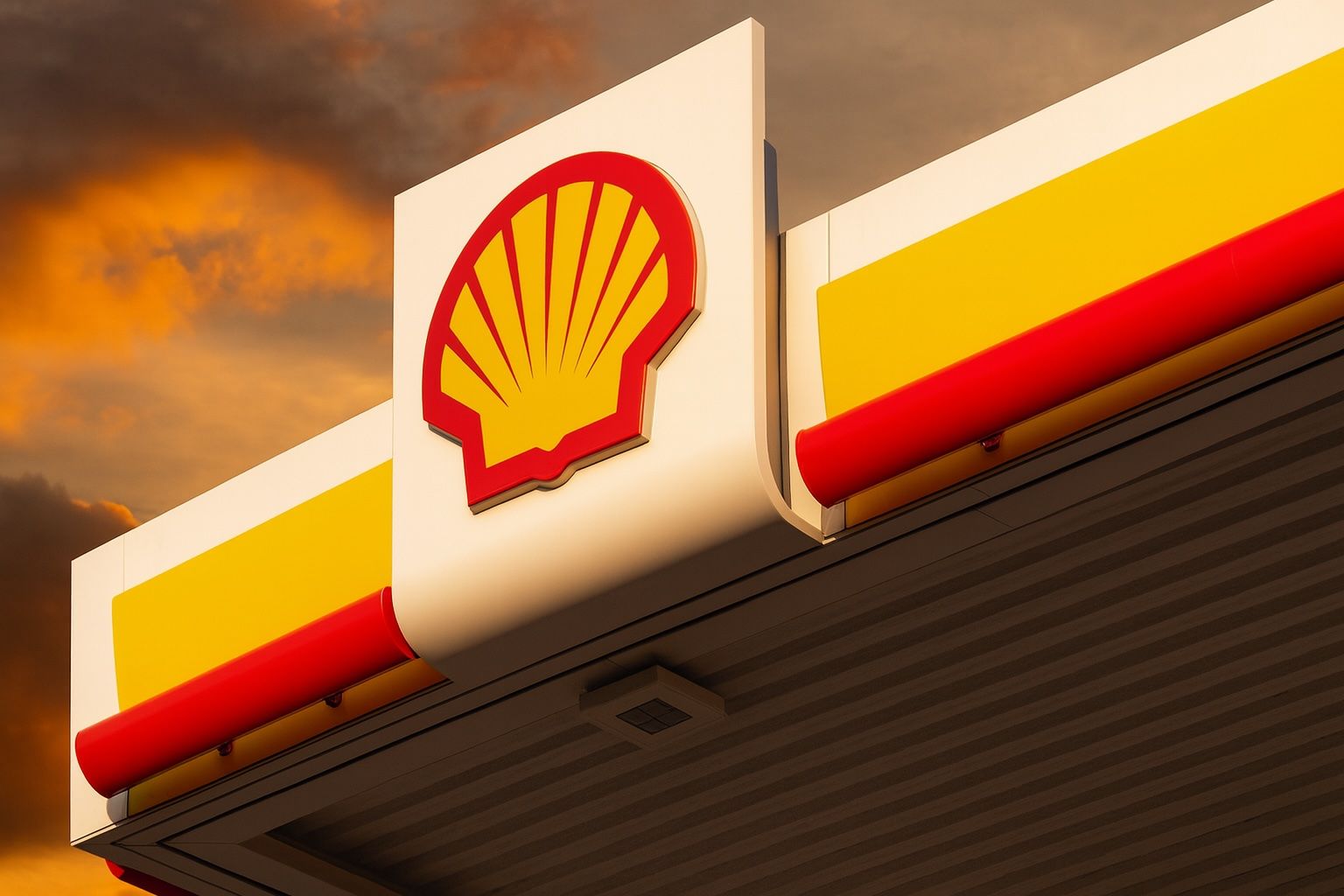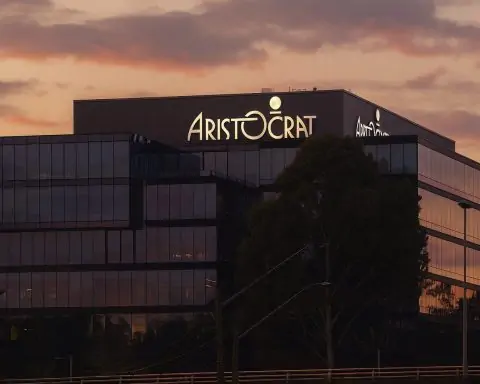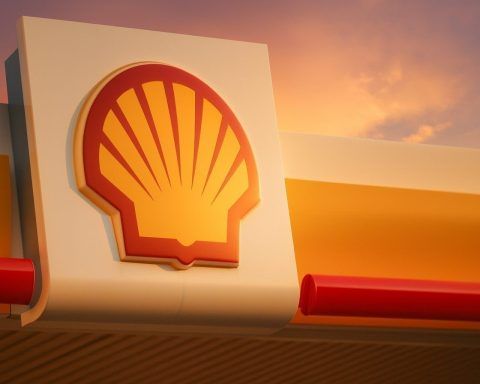- Shell’s Big Bet: Energy giant Shell approved a $2 billion offshore gas project in Nigeria in partnership with local firm Sunlink Energies, aiming to supply 350 million cubic feet of gas per day to the Nigeria LNG export terminal by late 2020s [1] [2]. The HI field development marks Shell’s latest investment in Nigeria’s deepwater gas sector.
- LNG Boost: The new gas output will feed Nigeria LNG’s Train 7 expansion, providing nearly one-third of the feed gas needed for the upcoming LNG train [3]. Shell plans to grow its global LNG volumes by 4–5% annually to 2030, and this project aligns with that strategy [4].
- Government Triumph: Nigerian officials hailed the project as part of an $8 billion wave of upstream investments under President Bola Tinubu’s administration [5]. It’s the third major oil/gas project FID in 18 months (after Ubeta gas and Bonga North) – a sign, they say, of renewed global investor confidence in Nigeria’s reformed oil & gas sector [6].
- Expert Endorsements: “This upstream project will help Shell grow our leading Integrated Gas portfolio, while supporting Nigeria’s plans to become a more significant player in the global LNG market,” said Peter Costello, Shell’s Upstream President [7]. Nigeria’s energy adviser Olu Verheijen added that these gas projects will “strengthen the reliability of Nigeria’s LNG exports, expand domestic LPG supply… And this is only the beginning; more FIDs are on the horizon.” [8].
- Market Reaction: Shell’s London-listed shares edged down ~0.4% on the news, trading around 2,685 pence on Tuesday [9]. Analysts attribute the muted reaction to broader market conditions, noting that Shell’s strategic pivot to gas is a long-term play amid volatile oil prices and energy transition pressures.
Shell Greenlights $2 B Offshore Gas Project in Nigeria
Royal Dutch Shell has greenlit a $2 billion offshore gas development in Nigeria’s Niger Delta waters, partnering with indigenous firm Sunlink Energies. The project – known as the “HI” gas field – marks a significant final investment decision (FID) for Shell’s Nigeria portfolio [10]. Once operational, the HI field is expected to pump out 350 million standard cubic feet of gas per day at peak, roughly 60,000 barrels of oil equivalent in energy terms [11] [12]. This gas will be funneled to the Nigeria LNG (NLNG) plant on Bonny Island, a joint venture export facility where Shell holds a 25.6% stake [13] [14]. According to Shell, first production from HI is targeted by 2028–2030, reflecting the project’s offshore complexity [15] [16].
Shell’s Nigerian subsidiary SNEPCo (Shell Nigeria Exploration & Production Co.) will own 40% of the HI project, with Sunlink holding a 60% operating stake [17]. The field itself was discovered in 1985, lying about 50 km off Nigeria’s coast in 100-meter-deep waters [18]. The development plan features a wellhead platform with four production wells and a new pipeline to transport gas onshore to the NLNG facility [19] [20]. Shell estimates the field contains around 285 million barrels of oil equivalent in recoverable resources [21].
The decision comes on the heels of other strategic moves by Shell in Nigeria. Just last month, regulators approved Shell’s purchase (with Eni) of a stake in the offshore Bonga oilfield from TotalEnergies [22]. And in late 2024, Shell sanctioned the Bonga North project – part of a broader push into deepwater oil and gas. Notably, Shell has exited Nigeria’s onshore oil fields after years of spills, pipeline theft and community conflicts, pivoting its focus to offshore and gas assets [23]. The HI gas project underscores Shell’s commitment to “grow our leading Integrated Gas portfolio” even as it scales back more troublesome onshore operations [24] [25].
LNG Ambitions: Nigeria’s Train 7 and Shell’s Global Strategy
The HI field FID is a major boost for Nigeria’s LNG ambitions. Gas from HI will feed into NLNG’s Train 7, a long-awaited expansion that will add 8 million tonnes per year of LNG capacity – a 35% increase to NLNG’s output [26] [27]. “This announcement demonstrates our continued commitment to Nigeria’s energy sector, with a focus on deepwater and integrated gas,” Shell’s upstream chief Peter Costello said, framing the project as win-win for Shell and Nigeria [28]. By supplying nearly one-third of Train 7’s gas needs, HI and the recently started Ubeta gas project aim to make Train 7 “not just possible, but transformative” for Nigeria’s export capacity [29] [30].
For Shell, expanding LNG output is a core pillar of its strategy. The company has set a goal to grow LNG volumes by 4–5% annually through 2030 [31], betting on rising global demand for cleaner-burning fuel. Liquefied natural gas is seen as a bridge in the energy transition – producing far fewer greenhouse emissions than coal when used for power, and less than oil in transportation [32]. The Nigeria HI project neatly fits this playbook, bolstering Shell’s LNG supply portfolio from Africa. Shell’s presence in NLNG (where state-run NNPC owns 49% and partners like TotalEnergies and Eni hold stakes) means Shell benefits both upstream and downstream – selling gas to NLNG and profiting from LNG exports [33]. The new gas will flow via NLNG’s Train 7, expected to come online in the late 2020s, helping Shell fulfill long-term contracts to Asian and European buyers amid intensifying competition in the LNG market.
Nigerian energy officials also emphasize the domestic benefits of these gas projects. Presidential energy adviser Olu A. Verheijen noted that more gas supply will “expand domestic LPG supply, reduce imports, boost foreign exchange earnings, and advance clean cooking access for millions” of Nigerians [34]. In addition to exporting LNG, Nigeria plans to use some of the byproducts (like LPG – liquefied petroleum gas) at home, reducing costly fuel imports and improving energy access. The HI project will also send condensate (light oil) to the Bonny Oil & Gas Terminal for export [35], generating extra revenue. Shell highlights that such projects contribute to local jobs in construction and operations, and can stimulate supporting industries [36].
$8 B Investment Wave Signals New Confidence in Nigeria
The Shell-Sunlink gas venture is being celebrated in Abuja as a validation of Nigeria’s oil sector reforms. President Bola Tinubu cheered Shell’s FID as “another decisive vote of confidence in Nigeria’s reform agenda”, according to local reports [37]. Since taking office in 2023, Tinubu’s government has pursued policies to attract investors – tax incentives, regulatory clarity, streamlined approvals – aiming to revive an industry that stagnated under previous uncertainty [38]. Those efforts appear to be bearing fruit: over $8 billion in major upstream projects have reached FID in the past 18 months [39].
The HI gas project is the third landmark FID in that period, following the Ubeta onshore gas project and Bonga North deepwater oil project [40]. All three were identified as “blueprint projects” by the government, targeted for fast-tracking under new rules [41]. Officials say the HI field’s development was enabled by Presidential Directive 40, which created a globally competitive fiscal framework for gas in shallow offshore fields [42]. In other words, Nigeria tweaked its laws (royalties, taxes, terms) to make a 40-year-old discovery finally economically viable. “With the Ubeta FID and now the HI FID, we have secured the gas supply needed to make NLNG Train 7 not just possible, but transformative,” Adviser Verheijen stated [43]. “These projects will strengthen the reliability of Nigeria’s LNG exports… And this is only the beginning; more FIDs are on the horizon.” [44]
President Tinubu’s team is projecting this as a momentum shift for Nigeria’s energy sector. “Shell’s second major FID in one year is a clear validation of our wide-ranging reforms and a signal to the world that Nigeria is fully open for business and investment,” Tinubu said in a statement [45]. Indeed, Shell’s investment comes on top of other deals (like TotalEnergies’ $510 million sale of a Bonga field stake to Shell/Eni [46]) and new drilling plans by independents, suggesting a resurgence of capital into Nigerian oil and gas. However, turning FIDs into actual barrels and molecules will require continued political stability and security – always a concern in the Niger Delta. Industry watchers note that while investor optimism is up, delivering these projects on time (amid global supply chain issues and competition for LNG construction resources) will be the next big challenge.
Market Reaction and Outlook
Global markets reacted calmly to Shell’s Nigerian gas announcement. In London trading on Tuesday, Shell’s stock (LON: SHEL) dipped about 0.4% to 2,685 pence by mid-morning [47], roughly in line with broader energy sector trends. The modest share movement suggests investors had largely anticipated Shell’s continued pivot to gas projects. Shell’s stock has been robust this year on the back of strong oil & gas earnings, share buybacks, and a focus on higher-margin projects, so a single project – even a $2 billion one – didn’t dramatically sway sentiment. In Amsterdam and New York, where Shell’s shares also trade, the stock showed a similar slight decline. Analysts at Alliance News noted the HI project is part of Shell’s strategy to “move ahead with LNG projects” and follows its recent stake increase in Bonga, reinforcing the company’s long-term growth plan in gas [48] [49].
Energy experts view Shell’s Nigeria move as significant for several reasons. First, it bolsters Nigeria’s reputation among international oil companies at a time when competition for energy investment is fierce. “Over $8 billion in FIDs under President Tinubu signals renewed global investor confidence,” said presidential adviser Bayo Onanuga in a press release [50]. Nigeria is Africa’s top oil producer and has huge gas reserves, but regulatory bottlenecks and security issues have hindered development. If Tinubu’s reforms continue to unlock projects like HI and Bonga North, Nigeria could reverse a decade-long production decline and emerge as a bigger player in LNG exports – directly competing with new LNG ventures in Mozambique, Qatar’s expansion, and U.S. Gulf Coast projects.
Secondly, the project highlights Shell’s strategic balancing act in the energy transition. Even as the company faces pressure to cut emissions and invest in renewables, Shell is doubling down on natural gas – seen as the “bridge fuel” to a lower-carbon future. LNG demand is projected to grow in Asia and Europe as countries swap coal for gas in power generation. “LNG plays a key role in the energy transition,” Shell noted, emitting less CO₂ than coal or oil-based fuels [51]. By investing in gas supply now, Shell aims to secure future cash flow and maintain its status as one of the world’s top LNG traders. The HI project will count toward Shell’s goal of adding over 1 million boe/d of new production from 2025–2030 across its upstream and integrated gas portfolio [52].
Bottom Line: Shell’s new $2 billion gas venture in Nigeria is more than just another project – it’s a bellwether for Nigeria’s oil and gas revival and a cornerstone of Shell’s gas-centered growth strategy. The deal boosts Nigeria’s LNG expansion, promises economic benefits at home, and showcases the impact of pro-investment reforms. While challenges remain from field development to security, both Shell and Nigeria’s government are touting this FID as a major win. As President Tinubu put it, “Nigeria is fully open for business” [53] – and one of the world’s biggest energy companies is clearly betting on that promise.
Sources: Reuters [54] [55]; Shell Press Release [56] [57]; Nigeria State House [58] [59]; Guardian (Nigeria) [60] [61]; TS2 Tech [62]; Alliance News/SharePrices [63] [64].
References
1. www.reuters.com, 2. ts2.tech, 3. www.reuters.com, 4. www.reuters.com, 5. statehouse.gov.ng, 6. statehouse.gov.ng, 7. www.compressortech2.com, 8. guardian.ng, 9. shareprices.com, 10. www.reuters.com, 11. www.compressortech2.com, 12. www.compressortech2.com, 13. www.compressortech2.com, 14. shareprices.com, 15. www.reuters.com, 16. ts2.tech, 17. ts2.tech, 18. www.reuters.com, 19. www.shell.com, 20. www.compressortech2.com, 21. www.compressortech2.com, 22. www.reuters.com, 23. www.reuters.com, 24. www.compressortech2.com, 25. www.reuters.com, 26. statehouse.gov.ng, 27. guardian.ng, 28. www.compressortech2.com, 29. statehouse.gov.ng, 30. statehouse.gov.ng, 31. www.reuters.com, 32. www.shell.com, 33. www.reuters.com, 34. statehouse.gov.ng, 35. www.shell.com, 36. www.shell.com, 37. guardian.ng, 38. guardian.ng, 39. statehouse.gov.ng, 40. guardian.ng, 41. guardian.ng, 42. guardian.ng, 43. statehouse.gov.ng, 44. guardian.ng, 45. guardian.ng, 46. www.reuters.com, 47. shareprices.com, 48. shareprices.com, 49. shareprices.com, 50. statehouse.gov.ng, 51. www.shell.com, 52. www.compressortech2.com, 53. guardian.ng, 54. www.reuters.com, 55. www.reuters.com, 56. www.shell.com, 57. www.shell.com, 58. statehouse.gov.ng, 59. statehouse.gov.ng, 60. guardian.ng, 61. guardian.ng, 62. ts2.tech, 63. shareprices.com, 64. shareprices.com










